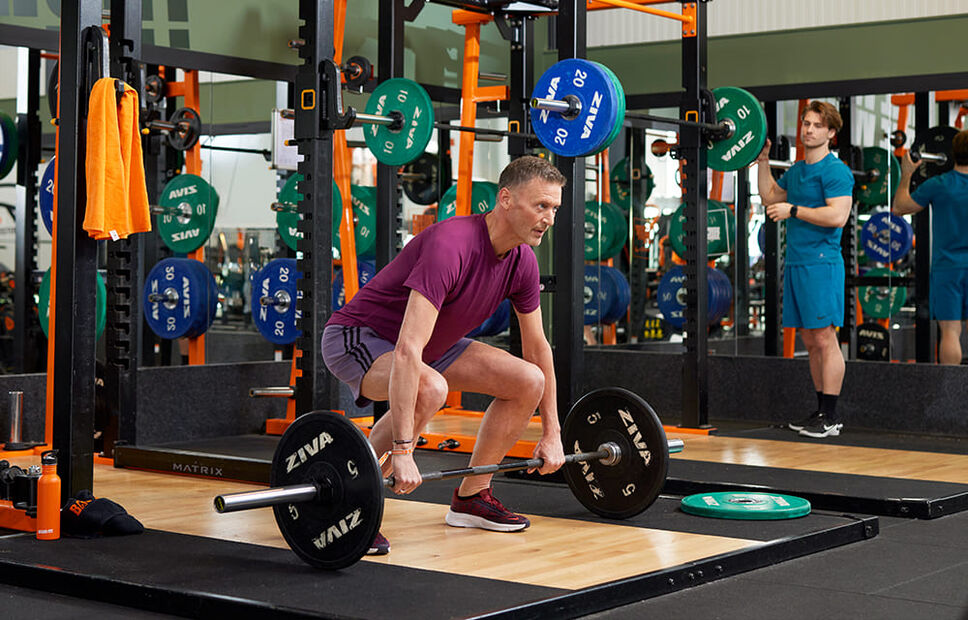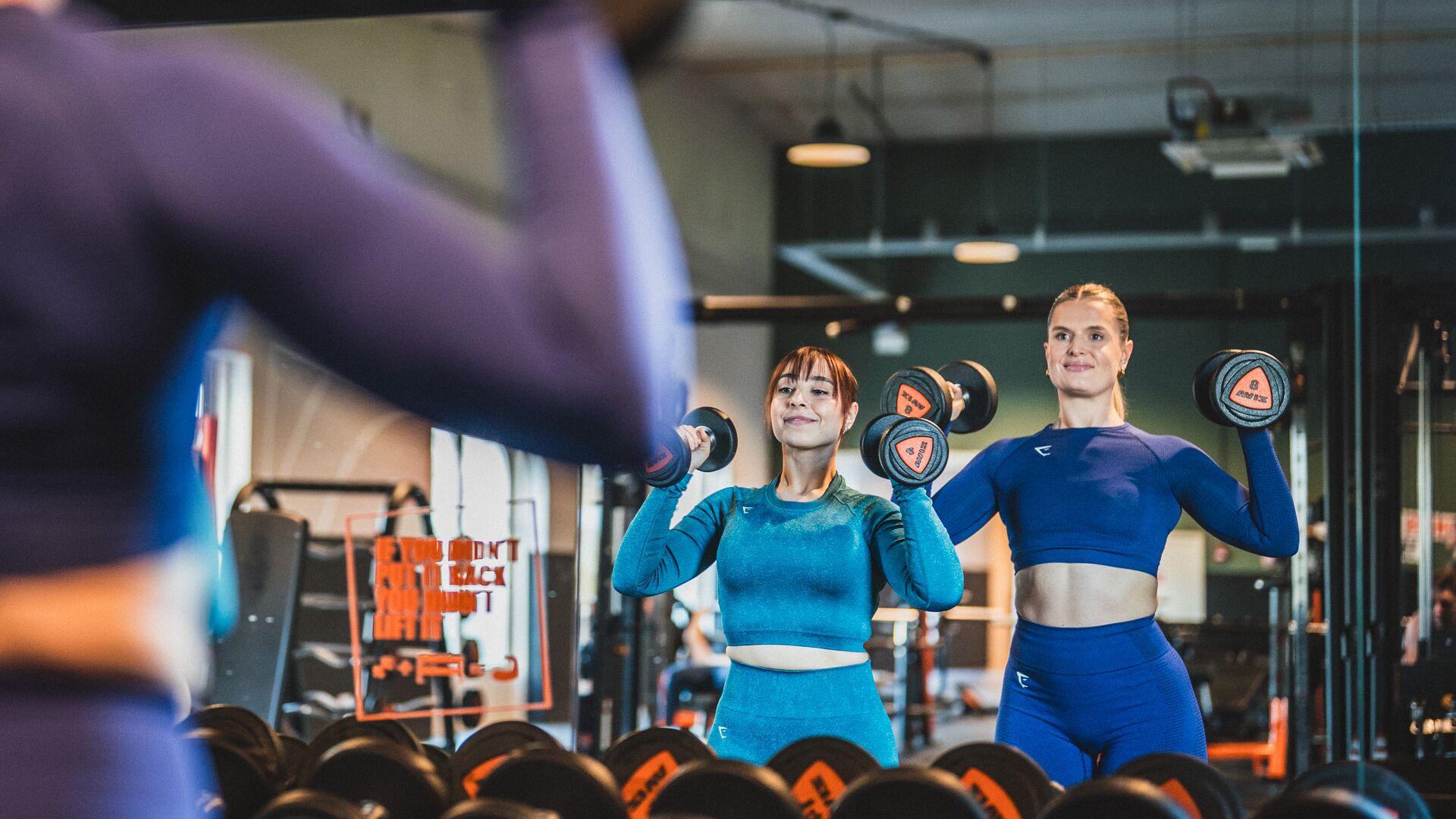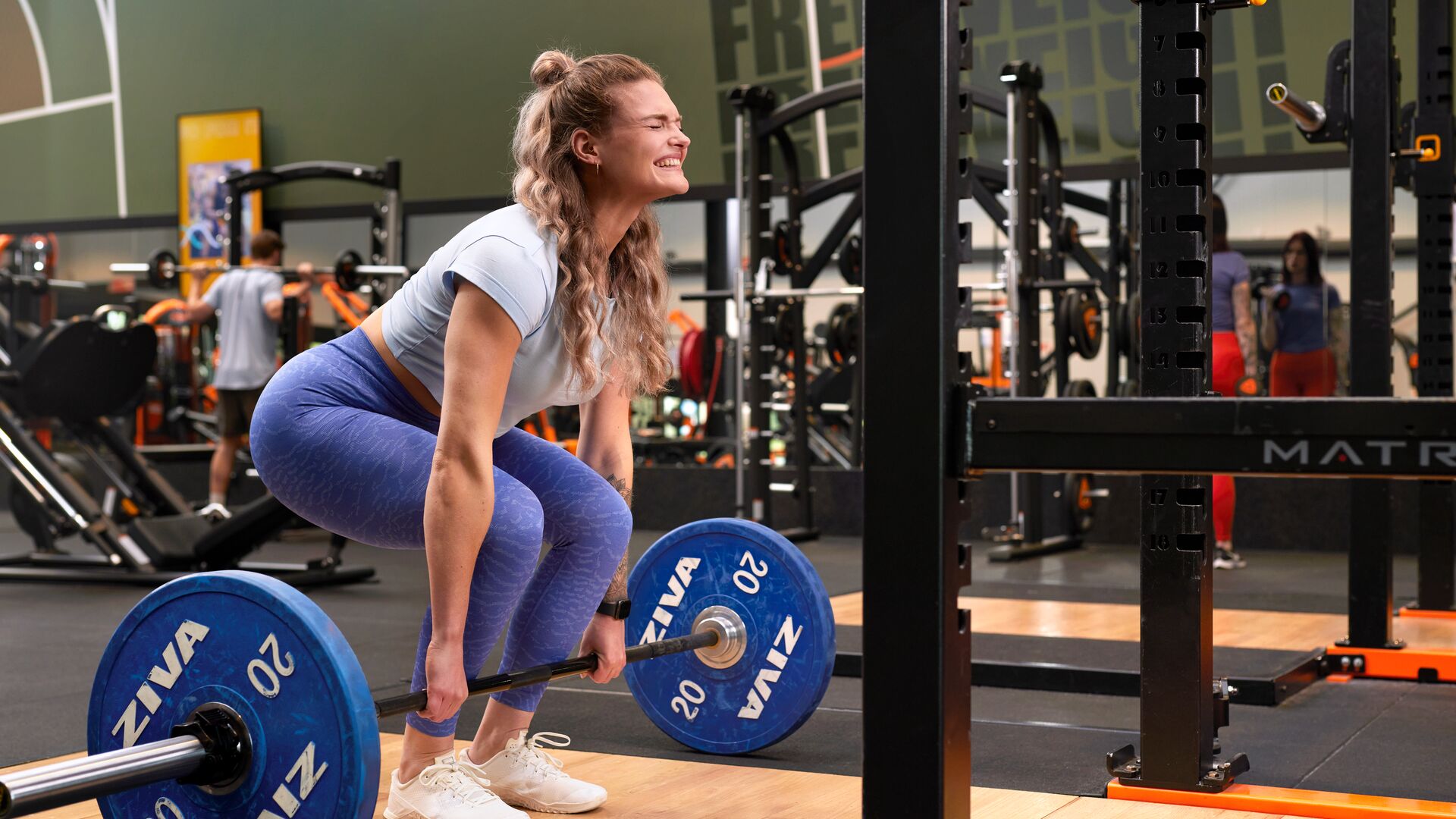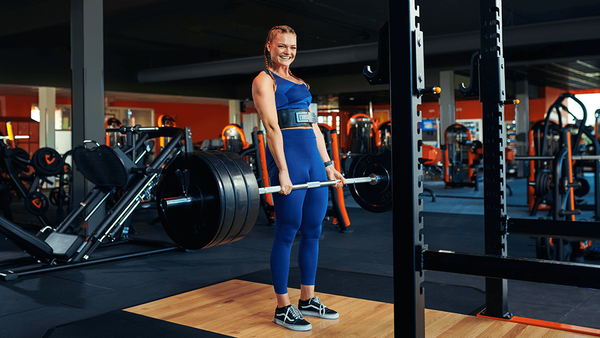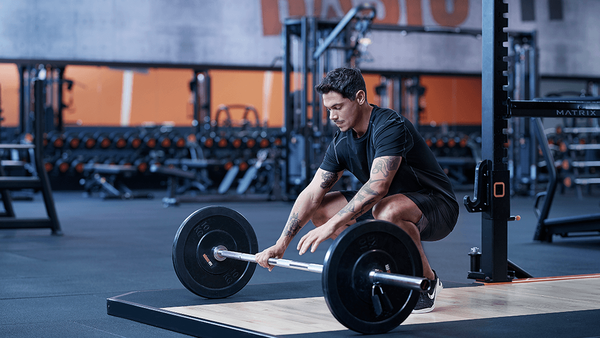Picking the right weight to lift can feel tricky, especially if you're a beginner. Go too light, and your muscles won’t get much out of it. Go too heavy, and your form might suffer. You want something in between, a weight that makes you work, but still lets you move well.
Whether you’re training in a Basic-Fit club or doing a session at home, lifting the right weight helps you train smarter, stay safe, and feel the results.
Let’s figure it out together.
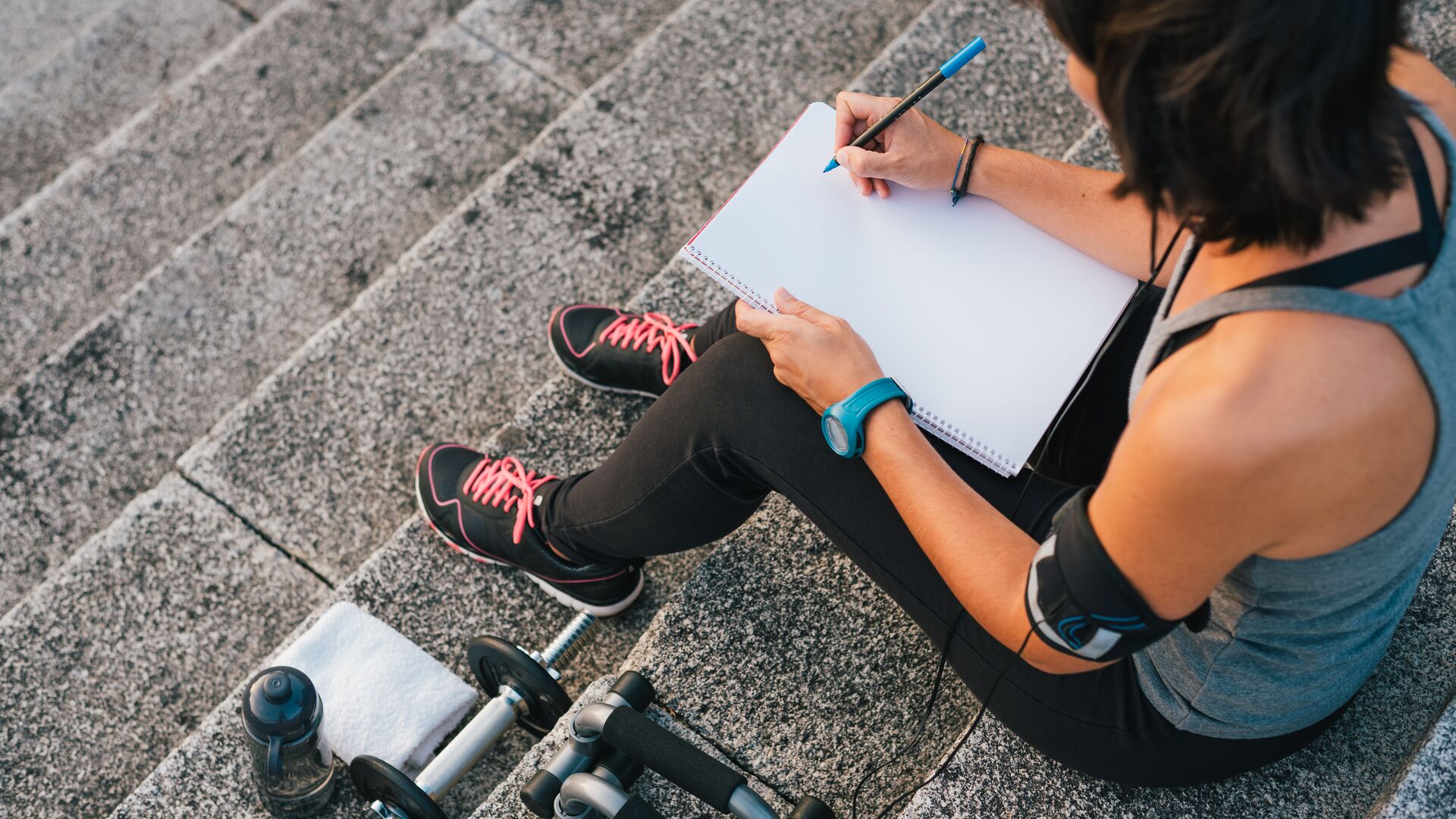
Start with your goal
Before grabbing any weight, think about what you want from your workout. Strength, endurance, muscle definition; each goal asks something different from your body, and your weight should match that.
Here’s a simple breakdown:
- Want to get stronger? Choose heavier weights and stick to 4 to 6 reps
- Going for more definition? Go for medium weights and aim for 8 to 12 reps
- Training for stamina? Pick lighter weights with more reps: 15 to 20.
This gives you a starting point. The next step is checking how it feels.
Use the “last two reps” rule
The weight you choose should make your final reps feel challenging, but not like a fight. If you breeze through every rep, it’s too light. If your form falls apart at the end, it’s too heavy.
A good rule of thumb: you should be able to push 1 or 2 more reps at the end of your set — but no more.
You want to look for that middle ground: working hard, but staying in control.
Know the difference between effort and pain
Effort is good. Effort means your body is getting stronger. But if you experience sharp pain during your workout, that means something’s off.
Check in with yourself:
- Feeling strong but pushed? Perfect.
- Feeling sharp pain or weird strain? That’s your cue to stop and drop the weight.
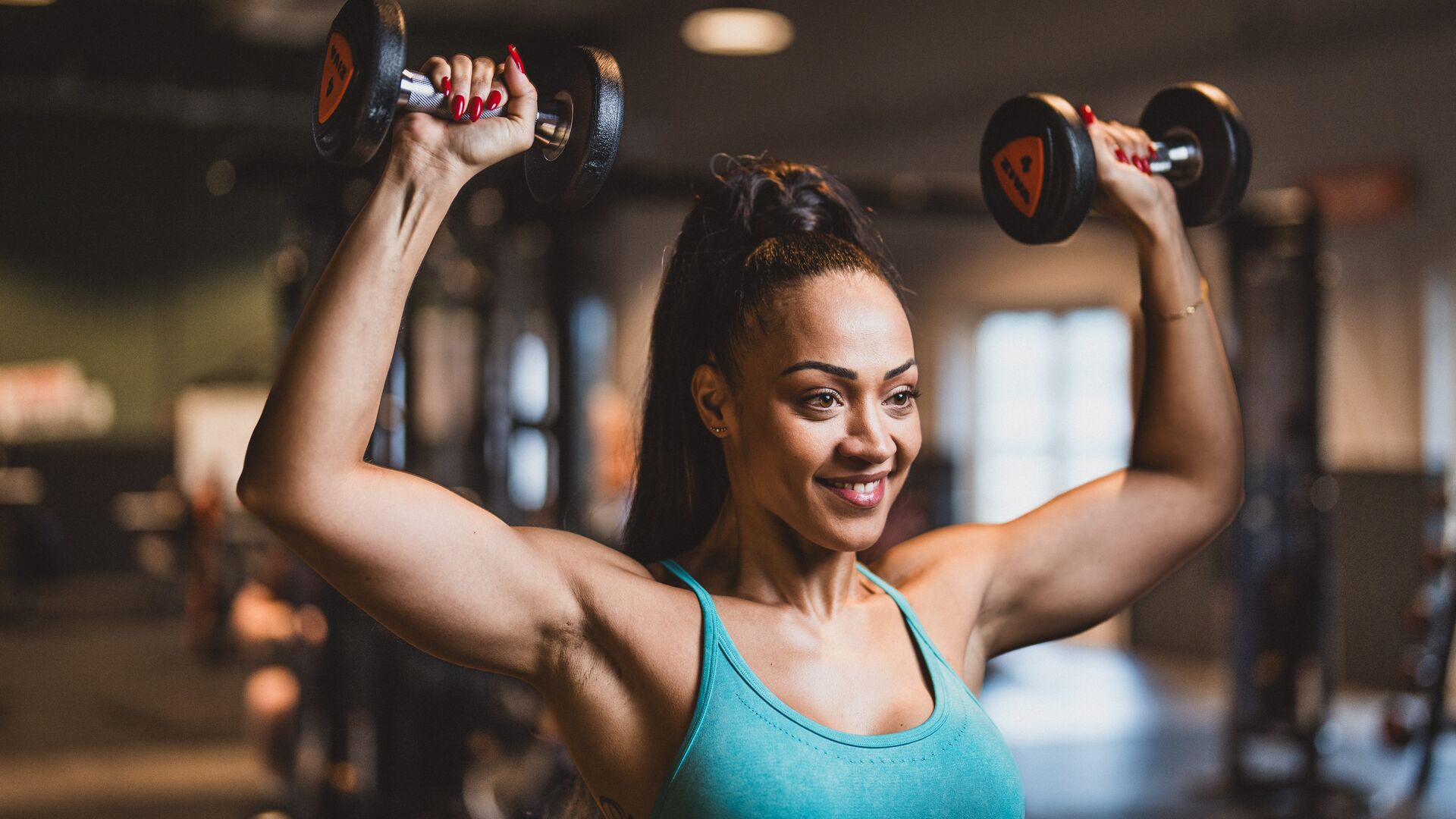
Use different weights for different moves
Your body is built with different strengths. That means you’ll need different weights for different exercises.
- Legs are home to your biggest muscles, so they can usually handle more weight — especially during moves like squats or lunges.
- Arms and shoulders are smaller muscle groups and tend to fatigue faster, so lighter weights work best here.
- Core training usually starts with bodyweight, but you can add weight once you build control.
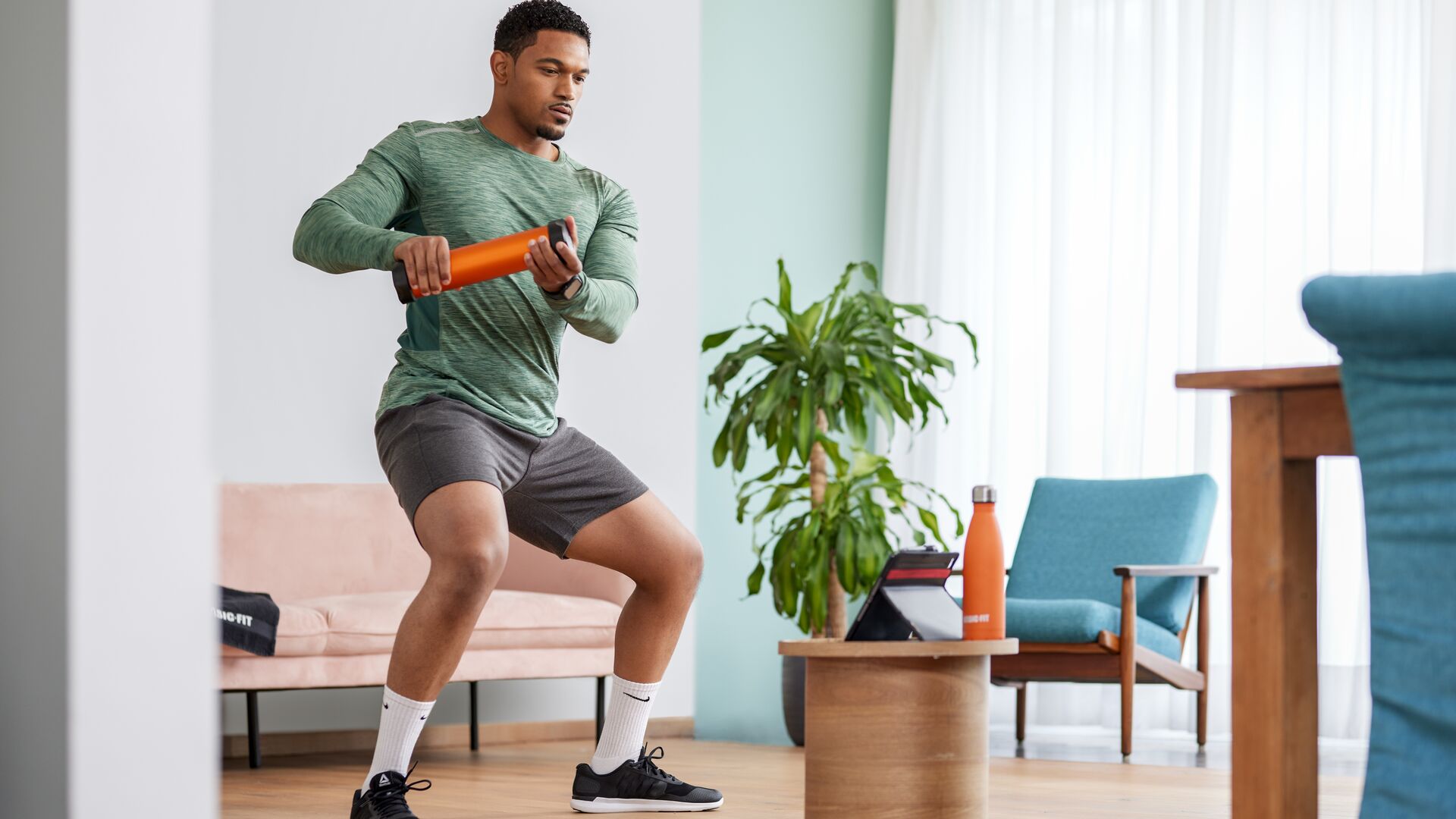
Training at home?
No dumbbells? No problem.
There are lots of ways to stay active at home. Fill a backpack with books or water bottles for strength work. Use resistance bands or even a sturdy chair for bodyweight moves. Do you have stairs? Use them for a quick cardio blast.
And don’t forget your digital tools. The Basic-Fit app is full of at-home workout ideas, videos, and programs. Whether you want a full session or a quick 10-minute burner, we've got hundreds of options that fit your mood.
You don’t need a full gym to keep moving. Just a bit of space and motivation.
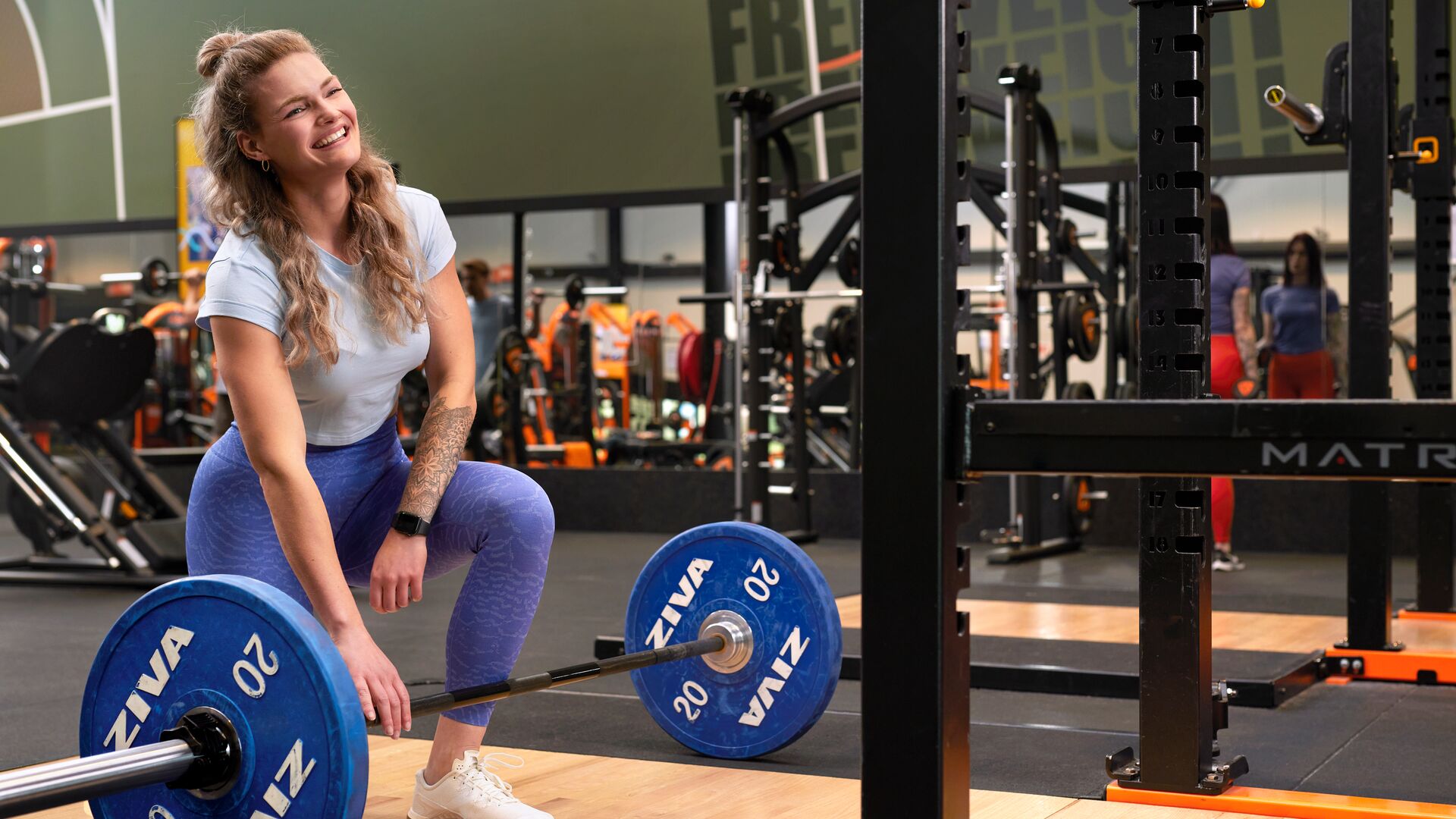
When to level up
At some point, the weights that used to challenge you will start feeling a bit too easy. That’s a good sign, it means you’re getting stronger.
You might notice:
- You finish every rep without much effort.
- You don’t feel the same challenge anymore.
- You’re ready to push a bit more.
If that’s you, try adding a little more weight. No need to double it, start with a 5% or 10% increase.
Keep your form tight
The right weight is one that lets you move well, from start to finish.
Keep your back straight. Core switched on. Knees in line. If something feels off, pause. Drop the weight. Reset. That’s progress too.
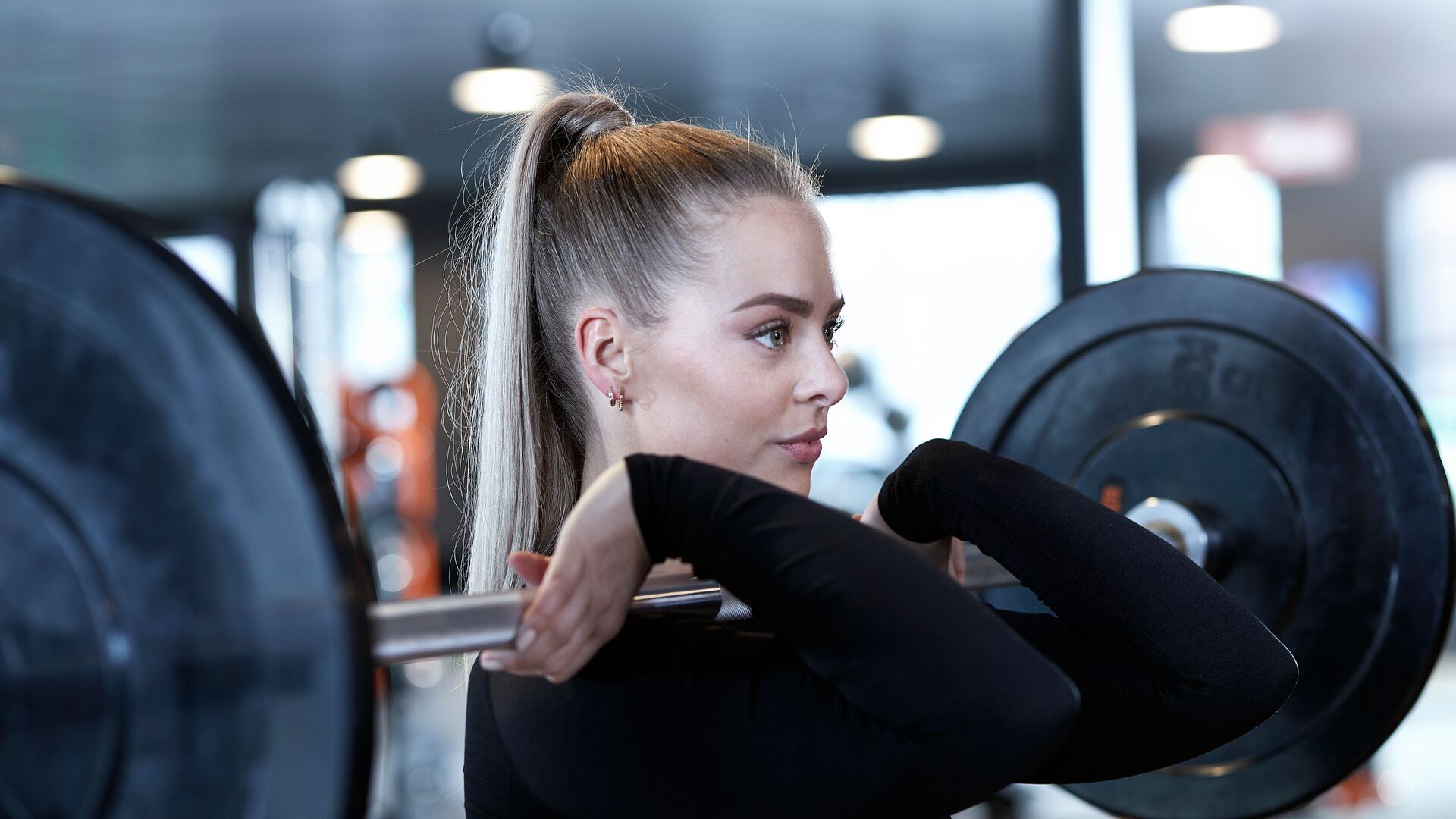
Quick tips for your next session
Before your next session, try this:
- Test your weight before the first set.
- Start light if you're not sure, and build up.
- Track how many reps you do and how it felt.
- Use a mirror, ask a Basic-Fit coach to check your form, or record yourself.
And remember: form and technique are always more important than how heavy you lift. Lift what lets you move well and stay in control.
You’re doing great
Picking the right weight doesn’t have to be complicated. You're already doing the hard part, which is showing up.
Listen to your body, always start with small changes, and keep going. That’s how training becomes a habit you actually enjoy.
We’re here for you.
Go For It!


